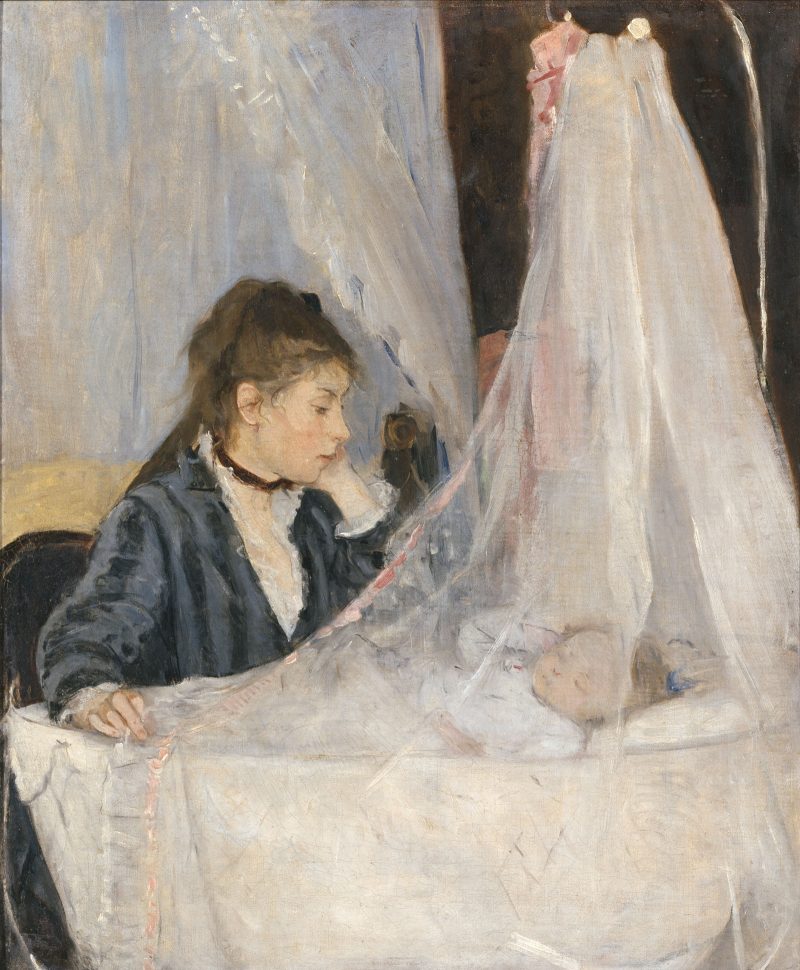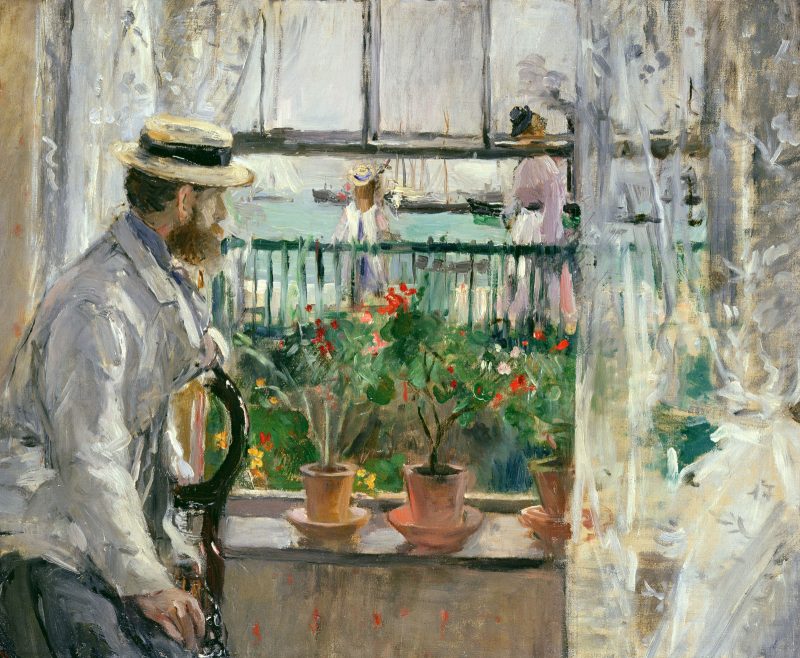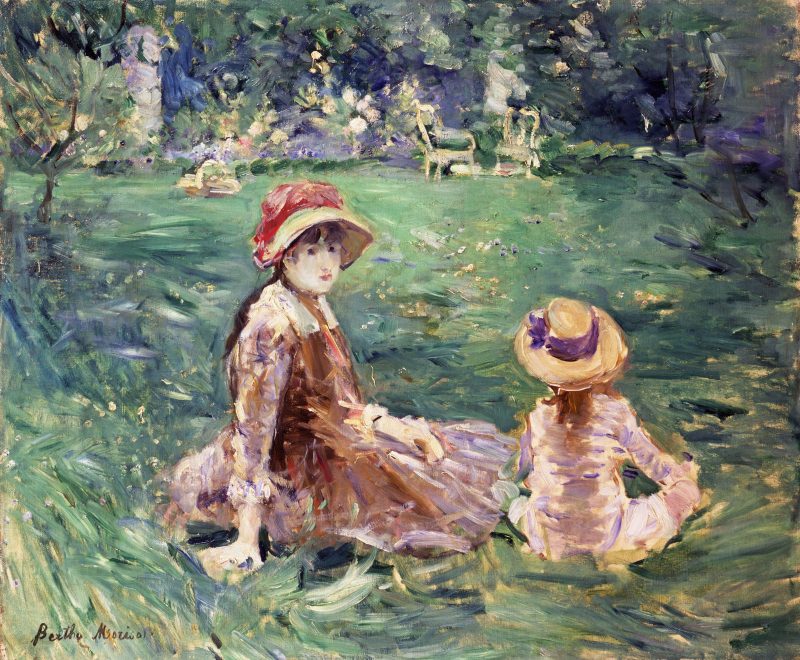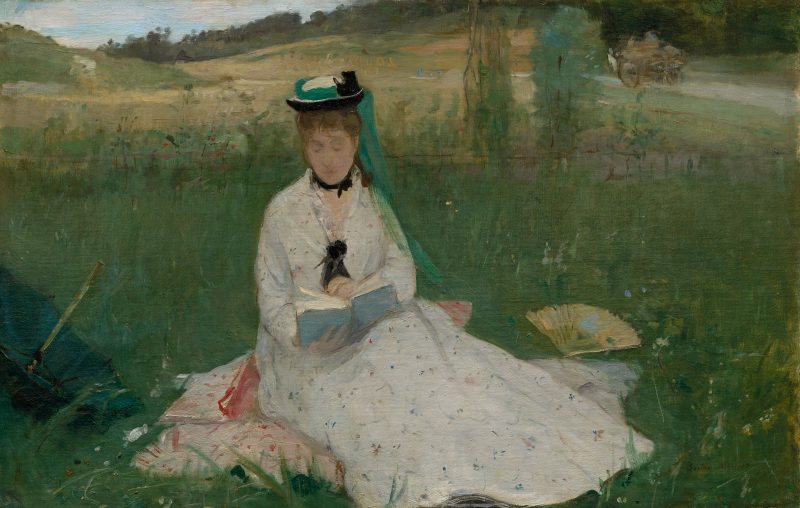
I underestimated Berthe Morisot. I had seen a small number of her paintings, one at a time in one museum or another and found them indefinite, lacking compelling focus. But I was asking the wrong questions of them, and Berthe Morisot: Woman Impressionist at the Barnes Foundation was a revelation. I discovered an artist whose ongoing concern was with painting itself, and who pushed the possibilities of paint further than any of her contemporaries – so far that some of her brushwork and incorporation of accidental drips of liquid paint look like painting of the 1940s-50s.
A woman’s world
Morisot was from an haute bourgeois family that, unusually, encouraged its daughters’ art education and Berthe’s desire to be a serious painter. The artist and her sister Edma had traditional training for non-academic artists of the period. They studied privately with several painters, including Jean-Baptiste Camille Corot, and had work accepted in the Paris Salon. They attended the weekly salon held by Mme. Manet, mother of the painter Édouard and his brothers, Gustave and Eugène, and after Edma married, the Morisots began holding their own weekly salons. Berthe Morisot was in the center of Paris’ circle of ambitious painters and writers. She showed work with respected dealers and exhibited in seven of the eight exhibitions organized by the Impressionists.
Morisot’s recorded output of 423 paintings included 247 figure paintings, 47 portraits and 98 landscapes. Her emphasis on figure painting reflected the life she led and the social restrictions on a woman of her class. She married Eugène Manet, brother of the painter, who supported her artistic ambitions. She used the family salon as her studio and largely painted her own family – Eugène and their daughter, Julie – friends, household servants and occasional professional models who worked for other artists she knew. Her paintings are set in domestic interiors, private gardens and the occasional more public spaces of parks.
Experiments in painting the everyday
The earliest group of paintings in the exhibit reflect contemporary interest in “plein air” (outdoor) painting, and the emphasis on painting “au premier coup,” or all in one sitting. “Reading (The Green Umbrella)” (1873), showing a young woman in a white dress sitting on the grass, has that desired quality of spontaneity and freshness. But as with work by many of her contemporaries, the painting had a longer evolution. Close study reveals that the woman’s veil and many of the smaller details of the landscape were added later, after that first, outdoors campaign of painting.
The second gallery presents paintings of individual women – six, mostly half-length views on the far wall, and several women in interiors and at their toilette – but it would be incorrect to term them portraits. They are, rather, types. Morisot does not reveal the inner character of her models, all young and attractive. They are studies of fabrics and flesh, experiments in how much she can depict with how little definition, paintings of suggestion. But what paintings! The backgrounds of a number of them display brushwork that breaks free of any notion of representation.
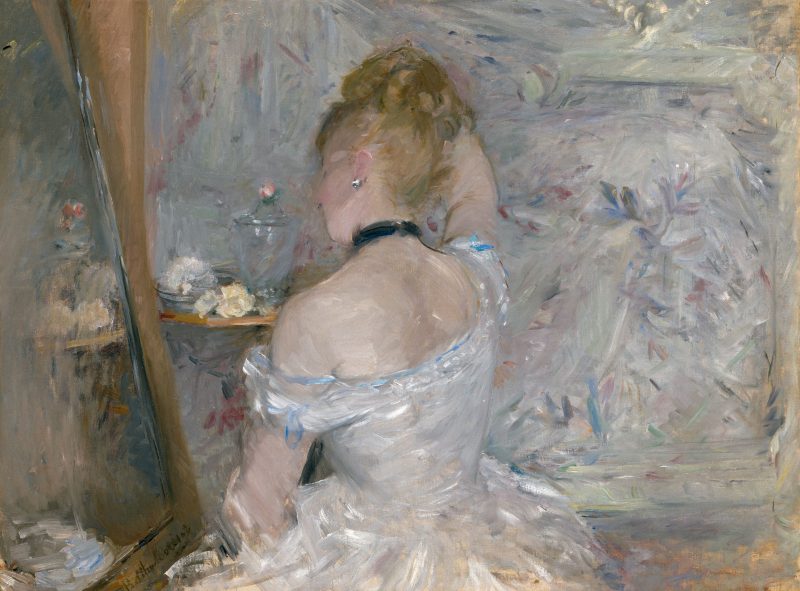
Finding a place in history
Students of Morisot’s work have discussed the limited mobility of bourgeoise women, which precluded many of the subjects, such as bars and music halls, that other Impressionist painters favored. Nicole R. Myers, writing in the exhibition catalog, suggests that Morisot’s choice of modern women as subjects was strategic, responding to contemporary market interests and depictions of the subject by her peers as well as writings that hailed modern life as the appropriate subject of modern painting. And there is no question that her depictions of women at their toilette are free from the sexualized gaze of the men around her. But I will leave to others the discussion of how interested she was in making a social commentary on the spaces she depicted. What I find more interesting is that, except for a short period when she was experimenting with the sort of brushwork that interested a number of Impressionist landscape painters, her brushwork was generally free of conventions, never settling into a regular language of paint handling for particular subjects or scenes. Such experimental-ism is very rare.
By the 1890s Morisot was painting languid young women in interiors, of the sort produced by Symbolist artists in France and elsewhere; it is no surprise that she was asked to exhibit with the Belgian group, Les XX (Les Vingt). The disappearance of Morisot’s presence from the historiography of nineteenth-century French painting probably had numerous causes, her gender among them. Like the painter Gustave Caillebotte, she was free from the economic necessity of selling work, hence only a small percentage of her work circulated. Sales guarantee attention, which neither artist’s estate generated. The current exhibition is a splendid opportunity to study the range of Morisot’s work and to come to terms with her still-unexplained daring.
“Berthe Morisot: Woman Impressionist” is on view October 21, 2018- January 14, 2019 at the Barnes Foundation, 2025 Benjamin Franklin Parkway, Philadelphia, PA 19130. Museum hours: Wed-Mon 11-5PM; Phone: 215-278-7000.
More Photos
